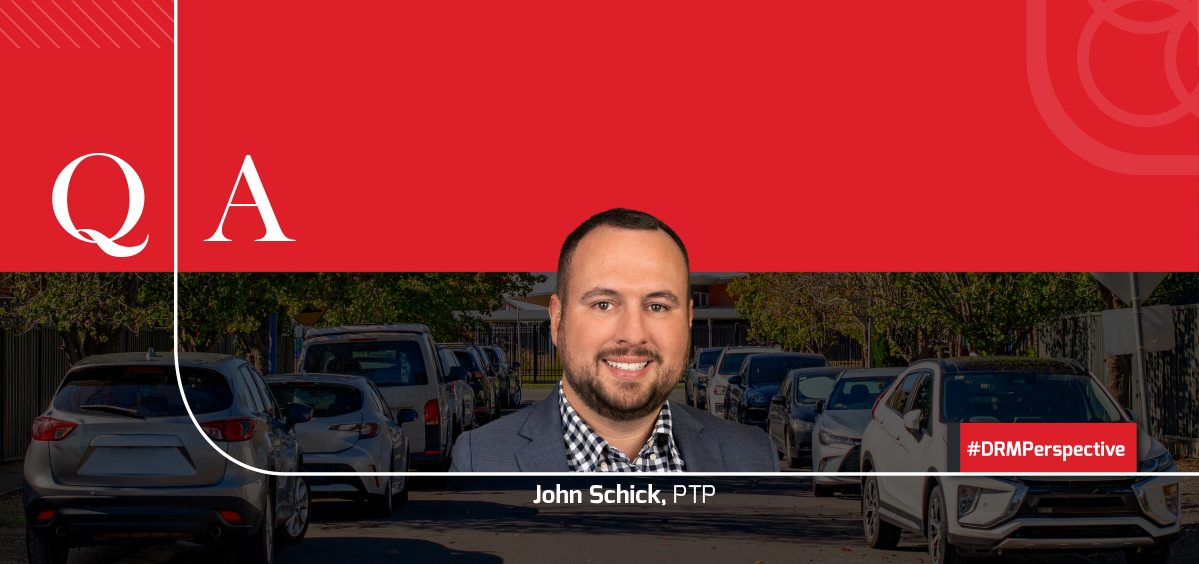Every new project, whether it's a residential neighborhood, a commercial plaza, or a mixed-use development, has an impact that stretches beyond its physical footprint. New homes mean more cars. New stores mean more visitors. And all of it means more pressure on the roads people rely on to get where they need to go.
Before breaking ground on a project, it’s important to consider how the added traffic will impact the existing transportation network. That’s where a Traffic Impact Analysis (TIA) comes in, and DRMP’s experts are ready to support clients with these services nationwide.
A TIA is a decision-making tool used by engineers, planners, and local governments to understand how a proposed development will affect traffic flow, intersection performance, and overall roadway safety. It helps identify potential issues early and provides solutions to keep traffic moving smoothly.
Whether required by a local municipality or a state Department of Transportation (DOT), a TIA is often triggered when a project is expected to generate a certain volume of new vehicle trips.
In this Q&A, DRMP Traffic Analysis Group Leader John Schick, PTP, explains why a TIA is essential for responsible, well-planned development.
Could you explain the role of a TIA in helping municipalities and developers make informed decisions about transportation planning?
A TIA provides a systematic process to evaluate the potential effects of a proposed development on the surrounding transportation network. It also can help in predicting traffic growth, road capacity, and evaluating accident risk, as well as identifying necessary mitigation improvements.
What are the key factors you consider when conducting a TIA for a new development or project?
Some key factors we consider, include:
Scoping – Define the geographic area, transportation options, and timeframe for the assessment.
Data Collection – Gather information on current traffic conditions, including vehicle, pedestrian, bicycle, and transit activity, as well as land uses and field observations to establish a baseline of existing conditions.
Impact Evaluation – Assess the potential impacts of the development, such as increased traffic volumes and changes to existing traffic patterns.
Mitigation Measures – Identify potential strategies to address any negative impacts the development may have on the transportation system.
State/County Guidelines – Understand and follow applicable state and county development impact guidelines to ensure a comprehensive and compliant assessment.
How do you determine the baseline traffic conditions for a TIA, and what kind of data do you need to gather?
Each development has different needs depending on the surrounding road networks. To fully understand the current traffic situation, a range of data should be collected, including (but not limited to):
Traffic Turning Movement Counts
Traffic Signal Timings
Travel Time and Delay Studies
Pedestrian and Bicycle Counts
Public Transportation Data
Geographic/Sight Distance Data
What are some common challenges you face when assessing traffic impacts in urban versus rural areas?
In urban areas, high traffic density and a constantly changing environment can make data collection and analysis more complex. In contrast, rural areas may present challenges due to limited infrastructure and varied travel patterns. In urban settings, it’s also important to consider all modes of transportation, such as walking, biking, and public transit since roadway space for vehicles is often limited.
Traffic impacts can vary depending on land use. How are school sites handled differently in a TIA, particularly when it comes to traffic counts?
A TIA provides schools with a comprehensive assessment of the potential traffic impacts of a proposed development or change. It allows schools to plan for efficient vehicle stacking on campus to minimize congestion and prevent stopped vehicles from parking on surrounding roads. Additionally, it helps ensure that the traffic flow meets the community’s needs, while optimizing safety and efficiency.
Can you walk us through the process of forecasting future traffic conditions and how accurate these projections typically are?
We start by estimating how current traffic will grow over time, using a growth rate approved by local or state agencies like the North Carolina Department of Transportation (NCDOT). Then we add in traffic from the proposed development, along with other nearby projects, to get a full picture of what future traffic might look like.
To estimate how much traffic the new development will generate, we use the Institute of Transportation Engineers (ITE) Trip Generation Manual. This manual provides standard formulas based on real-world data to predict the number of vehicle trips during a typical weekday, including the morning and evening rush hours.
Next, we estimate where those trips will come from and go to, using surrounding population data, existing traffic patterns, any previously approved traffic studies for nearby sites, and engineering judgment. Finally, we map those trips onto key roads and intersections to see how traffic will flow.
How do you work with local government agencies to ensure that a TIA addresses the specific concerns of the community?
We work closely with local agencies to review and respond to their comments and ensure a clear understanding of the proposed development and its potential impacts. Together, we develop mitigation strategies to help reduce or manage those impacts in a way that reflects community needs and concerns.
How do you handle situations where a TIA reveals that a proposed development could cause significant traffic disruptions?
Identifying potential traffic issues early in the development process allows us to work proactively with developers and agencies to minimize impacts on the surrounding transportation network. We recommend appropriate mitigation measures, such as roadway improvements, signal timing adjustments, or access changes to address any anticipated disruptions.
What’s the typical timeline for completing a TIA, and how do you ensure the analysis is thorough without delaying the project?
While the depth of a TIA depends on the surrounding transportation network and project scope, the typical timeline ranges from six to 10 weeks. Factors such as data collection, agency coordination, and scoping can affect the schedule. We work efficiently and communicate early with stakeholders to keep the process on track while ensuring a thorough and reliable analysis.
How do you handle public feedback or concerns related to traffic impacts once a TIA is complete?
We prioritize active listening and empathy to ensure the public feels heard and their concerns are understood. By keeping lines of communication open and providing regular updates on potential solutions or mitigation efforts, we build trust with the community and maintain a strong emphasis on addressing local needs.
John Schick, PTP, serves as Traffic Analysis Group Leader for DRMP’s Transportation Market Sector.

















